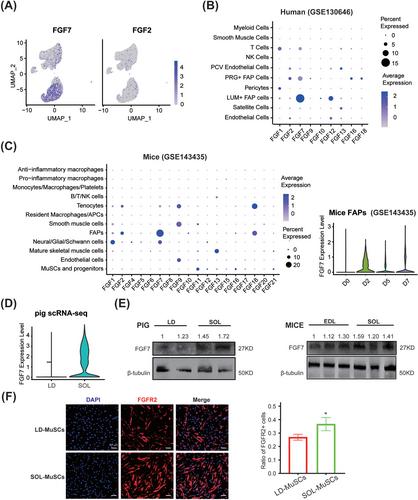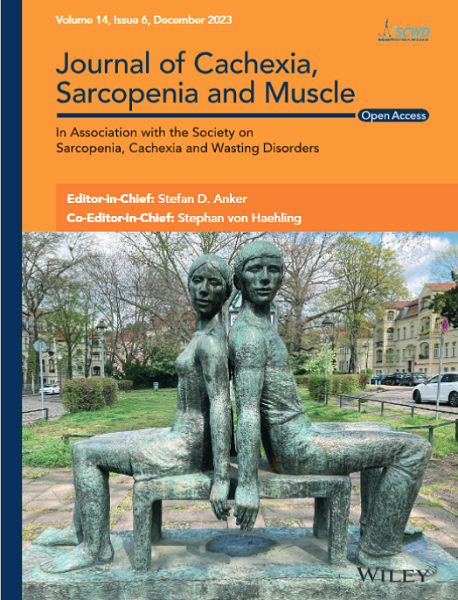Single-cell RNA-seq reveals novel interaction between muscle satellite cells and fibro-adipogenic progenitors mediated with FGF7 signalling
Abstract
Background
Muscle satellite cells (MuSCs) exert essential roles in skeletal muscle adaptation to growth, injury and ageing, and their functions are extensively modulated by microenvironmental factors. However, the current knowledge about the interaction of MuSCs with niche cells is quite limited.
Methods
A 10× single-cell RNA sequencing (scRNA-seq) was performed on porcine longissimus dorsi and soleus (SOL) muscles to generate a single-cell transcriptomic dataset of myogenic cells and other cell types. Sophisticated bioinformatic analyses, including unsupervised clustering analysis, marker gene, gene set variation analysis (GSVA), AUCell, pseudotime analysis and RNA velocity analysis, were performed to explore the heterogeneity of myogenic cells. CellChat analysis was used to demonstrate cell–cell communications across myogenic cell subpopulations and niche cells, especially fibro-adipogenic progenitors (FAPs). Integrated analysis with human and mice datasets was performed to verify the expression of FGF7 across diverse species. The role of FGF7 on MuSC proliferation was evaluated through administering recombinant FGF7 to porcine MuSCs, C2C12, cardiotoxin (CTX)-injured muscle and d-galactose (d-gal)-induced ageing model.
Results
ScRNA-seq totally figured out five cell types including myo-lineage cells and FAPs, and myo-lineage cells were further classified into six subpopulations, termed as RCN3+, S100A4+, ID3+, cycling (MKI67+), MYF6+ and MYMK+ satellite cells, respectively. There was a higher proportion of cycling and MYF6+ cells in the SOL population. CellChat analysis uncovered a particular impact of FAPs on myogenic cells mediated by FGF7, which was relatively highly expressed in SOL samples. Administration of FGF7 (10 ng/mL) significantly increased the proportion of EdU+ porcine MuSCs and C2C12 by 4.03 ± 0.81% (P < 0.01) and 6.87 ± 2.17% (P < 0.05), respectively, and knockdown of FGFR2 dramatically abolished the pro-proliferating effects (P < 0.05). In CTX-injured muscle, FGF7 significantly increased the ratio of EdU+/Pax7+ cells by 15.68 ± 5.45% (P < 0.05) and elevated the number of eMyHC+ regenerating myofibres by 19.7 ± 4.25% (P < 0.01). Under d-gal stimuli, FGF7 significantly reduced γH2AX+ cells by 17.19 ± 3.05% (P < 0.01) in porcine MuSCs, induced EdU+ cells by 4.34 ± 1.54% (P < 0.05) in C2C12, and restored myofibre size loss and running exhaustion in vivo (all P < 0.05).
Conclusions
Our scRNA-seq reveals a novel interaction between muscle FAPs and satellite cells mediated by FGF7–FGFR2. Exogenous FGF7 augments the proliferation of satellite cells and thus benefits muscle regeneration and counteracts age-related myopathy.


 求助内容:
求助内容: 应助结果提醒方式:
应助结果提醒方式:


